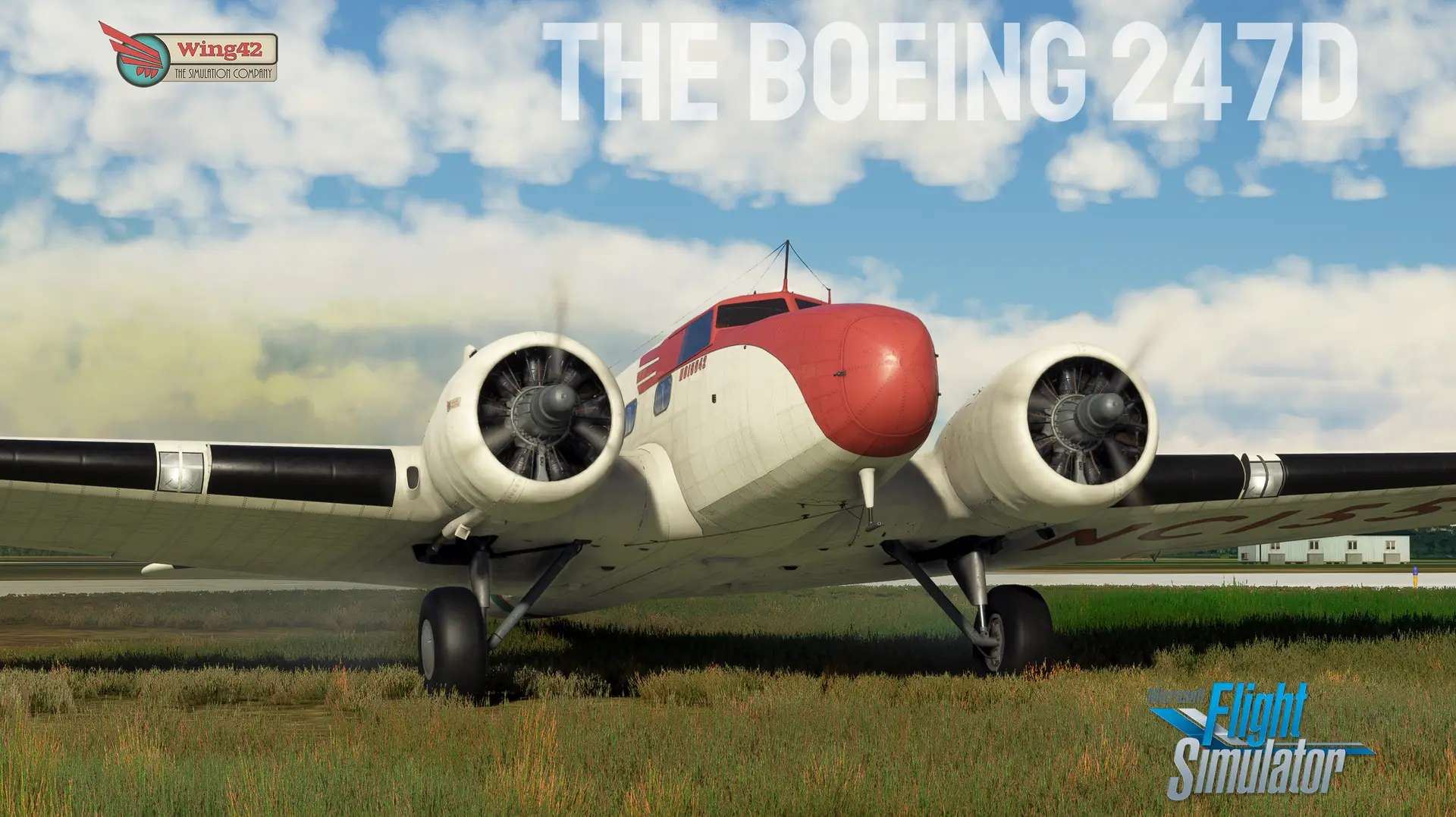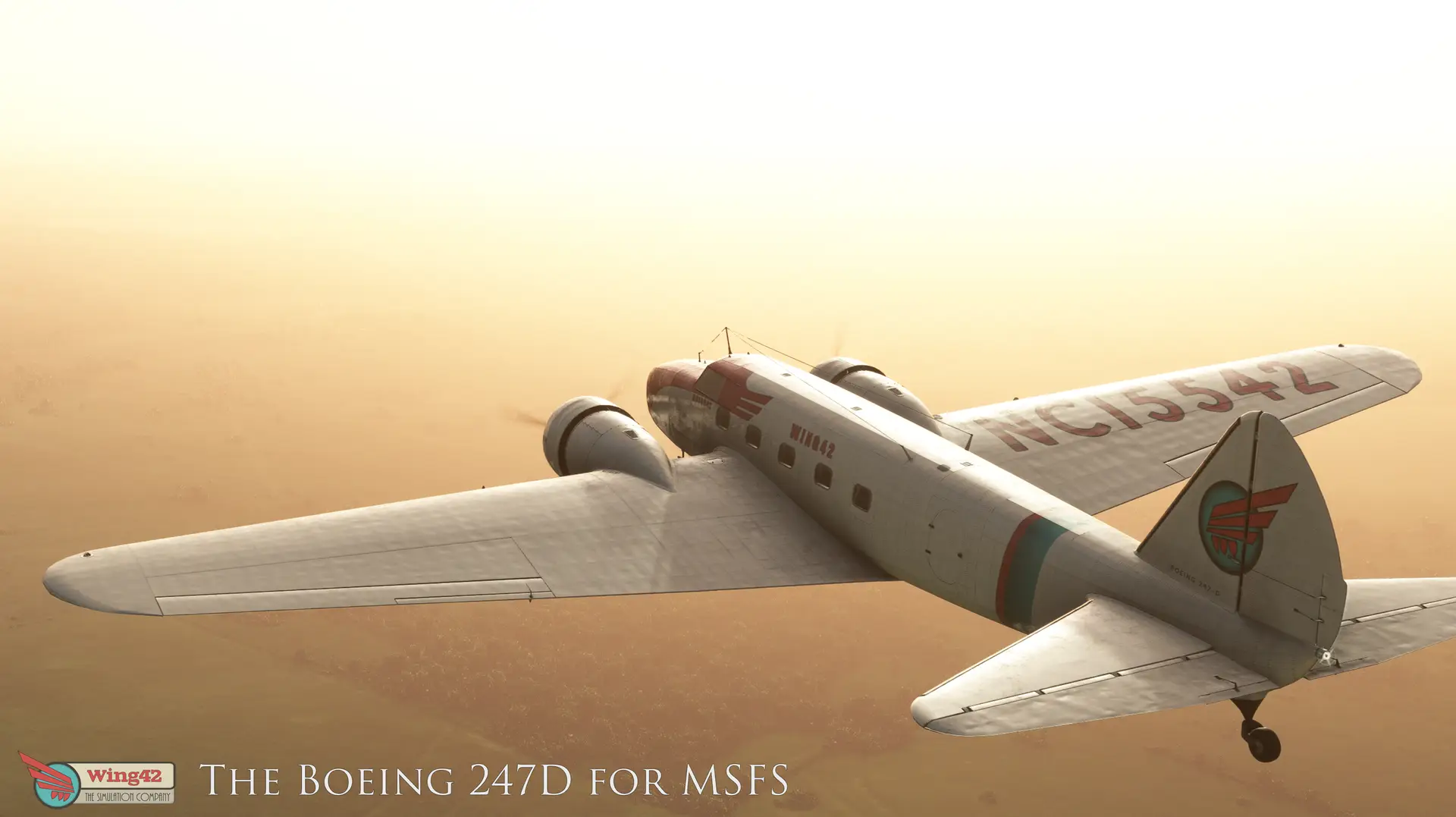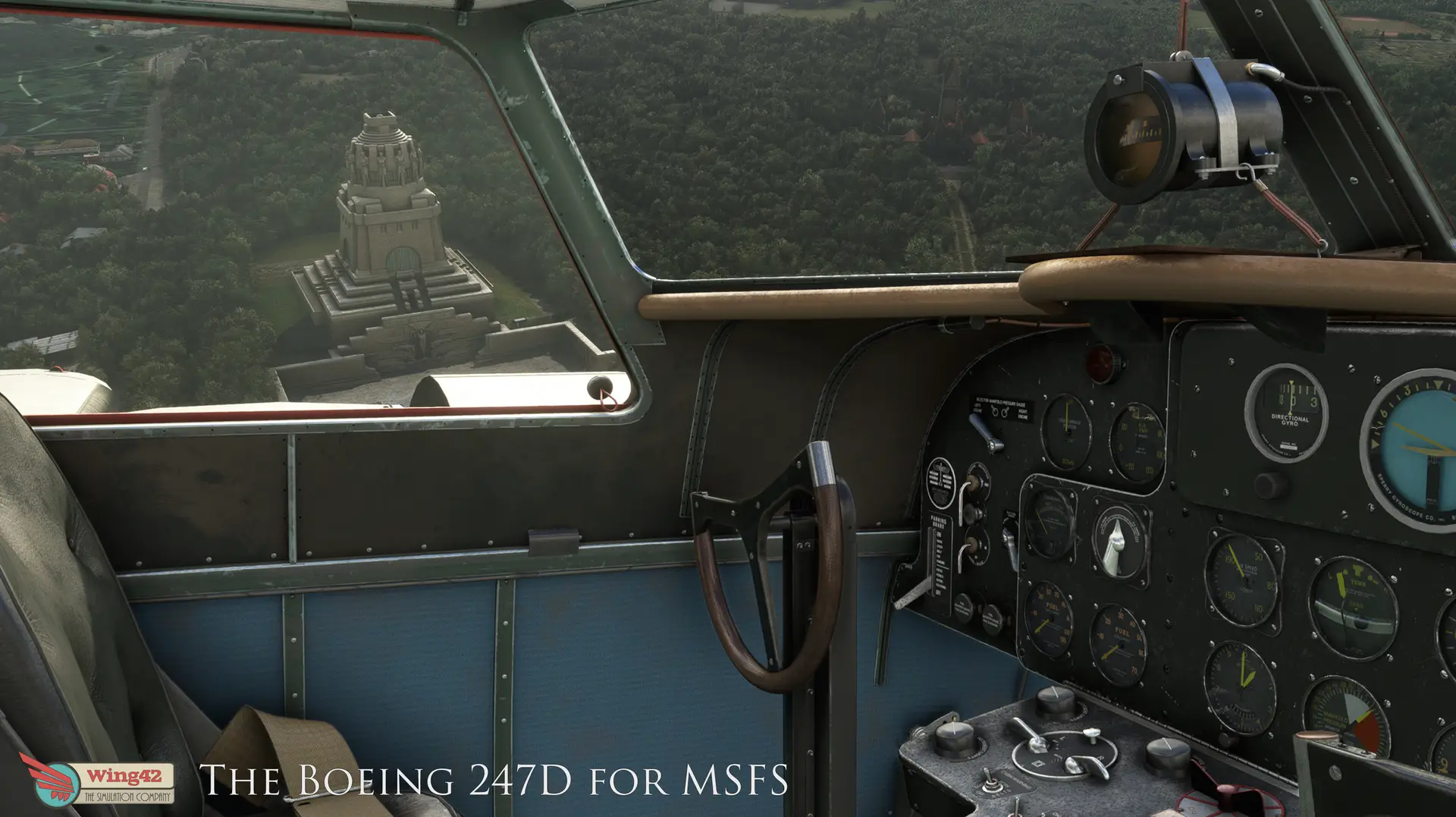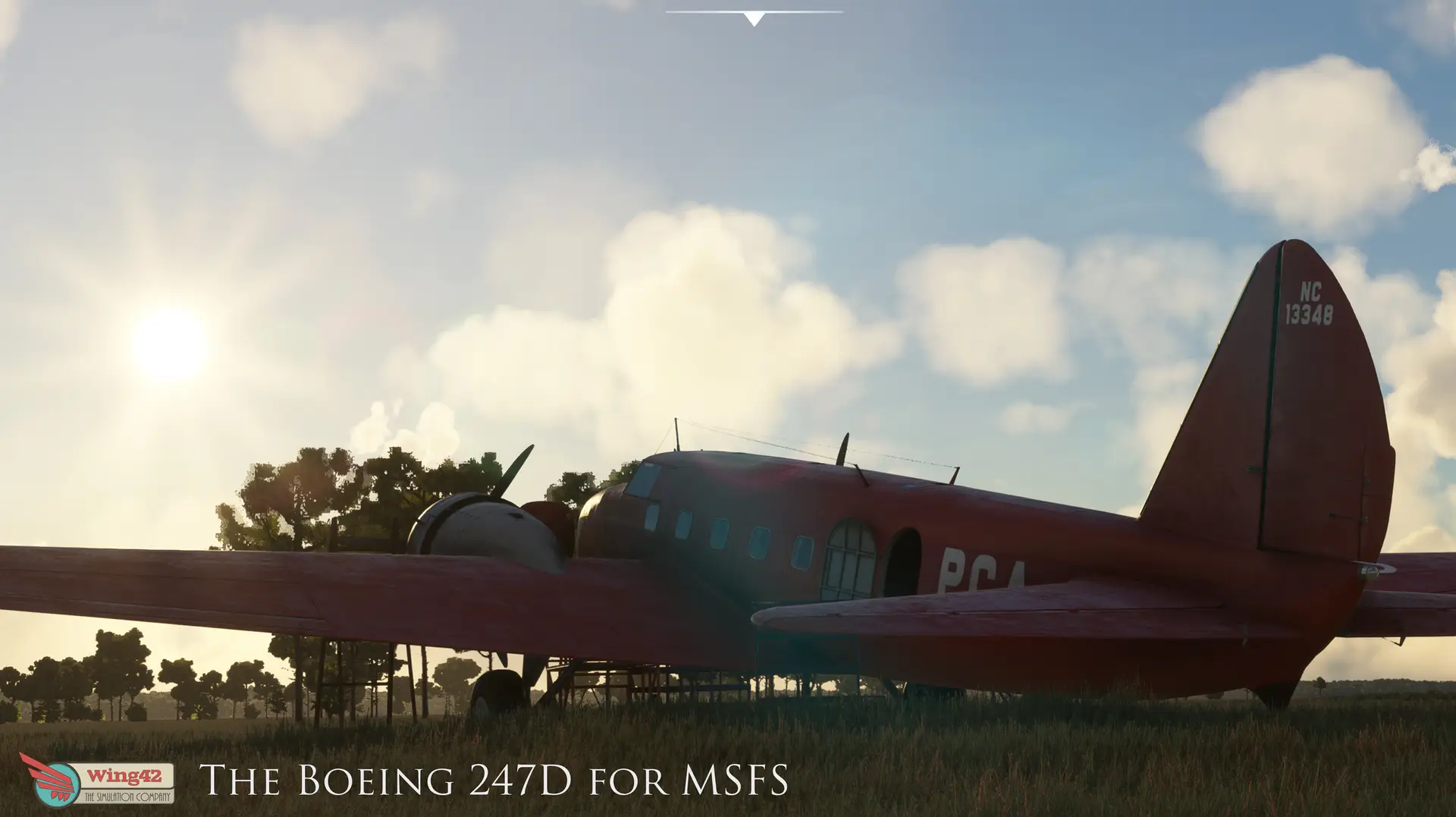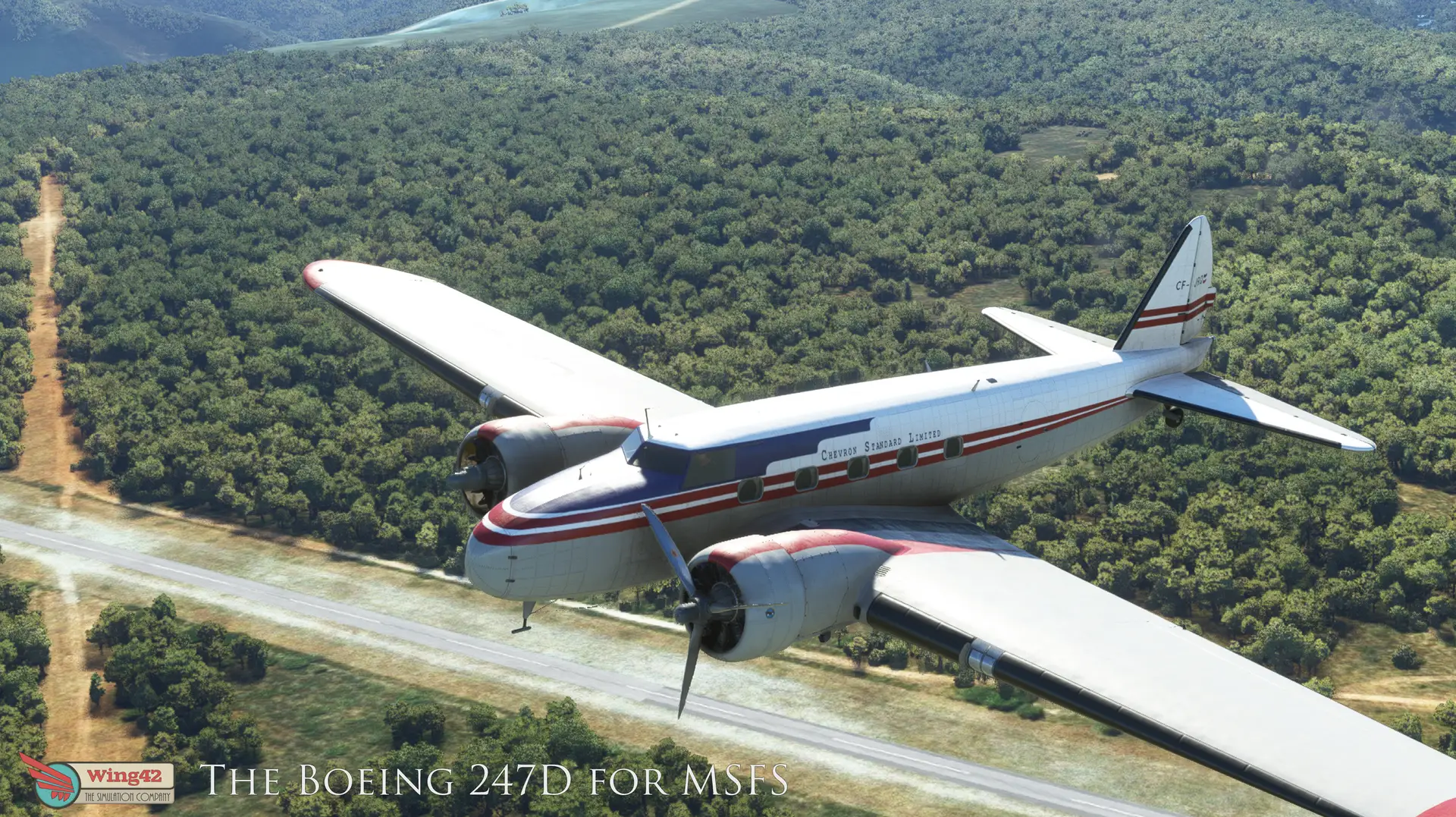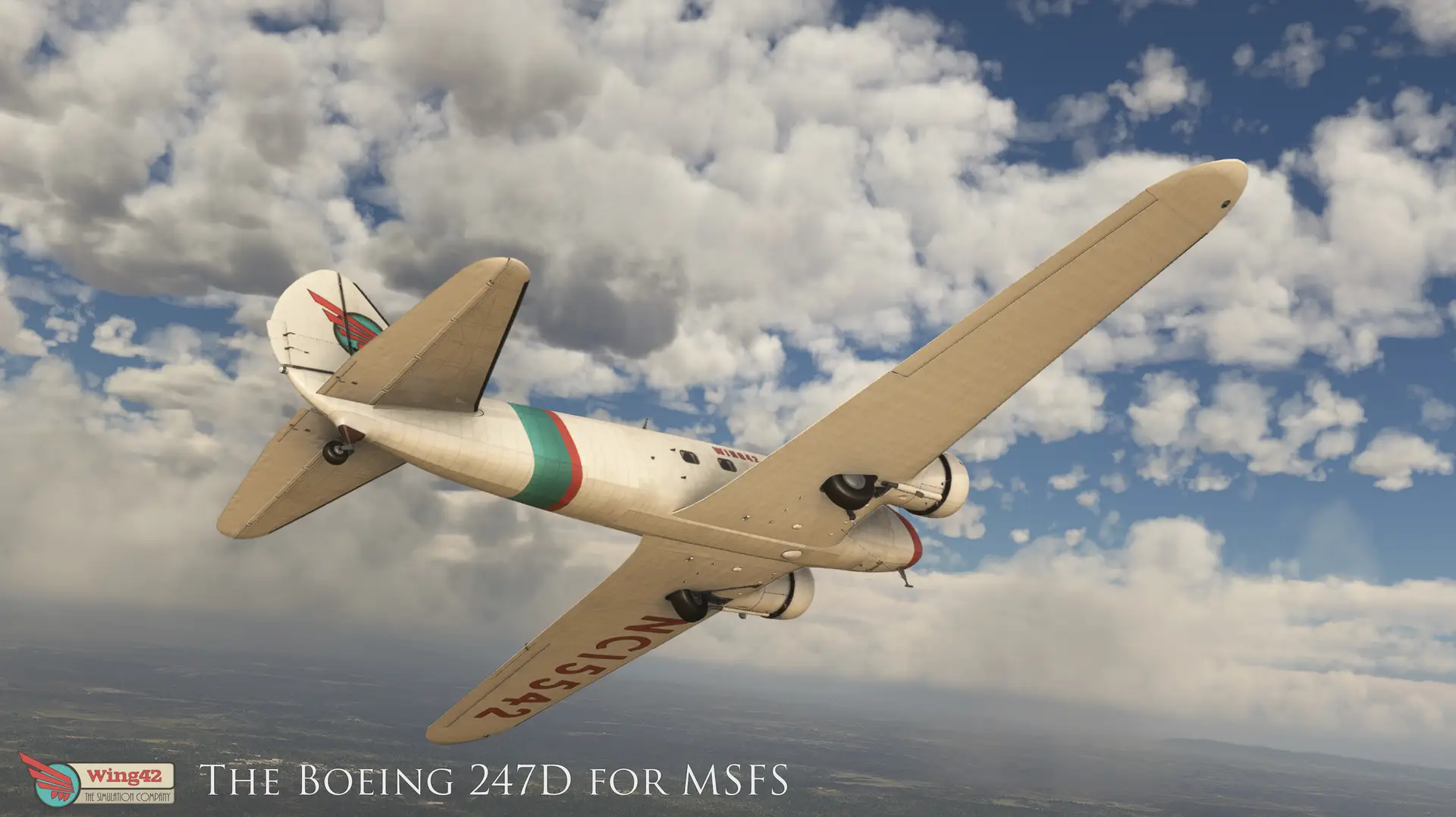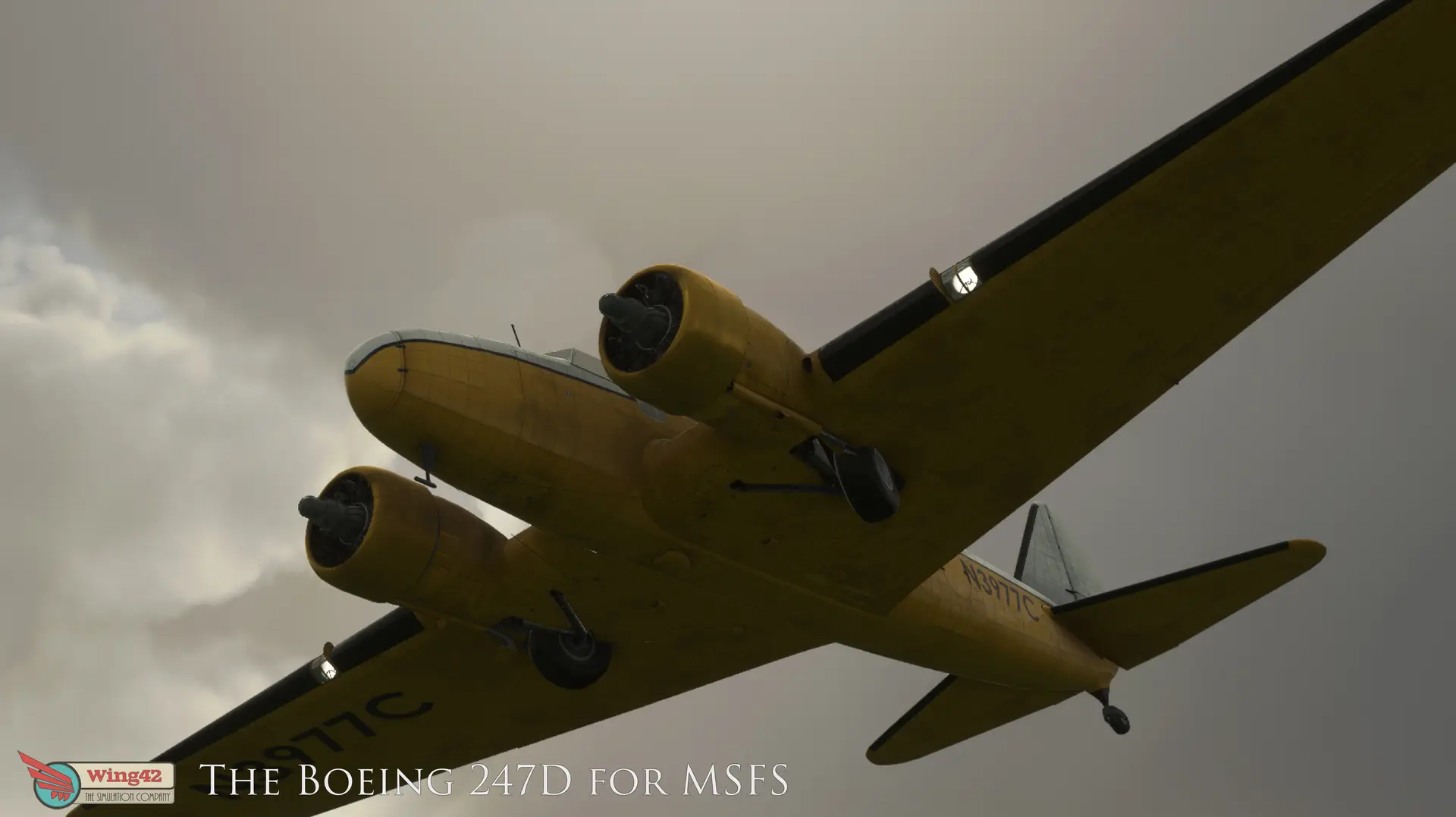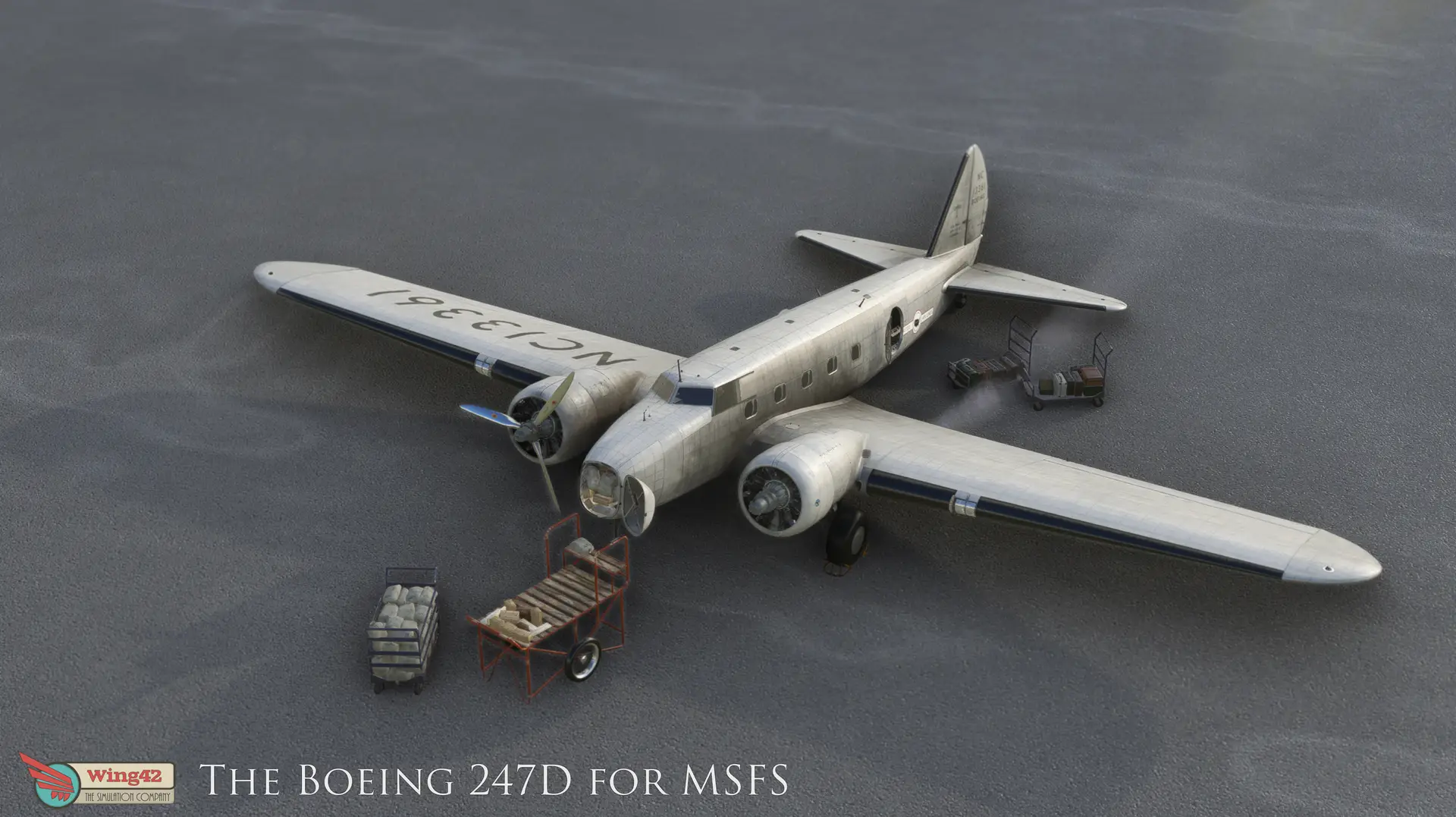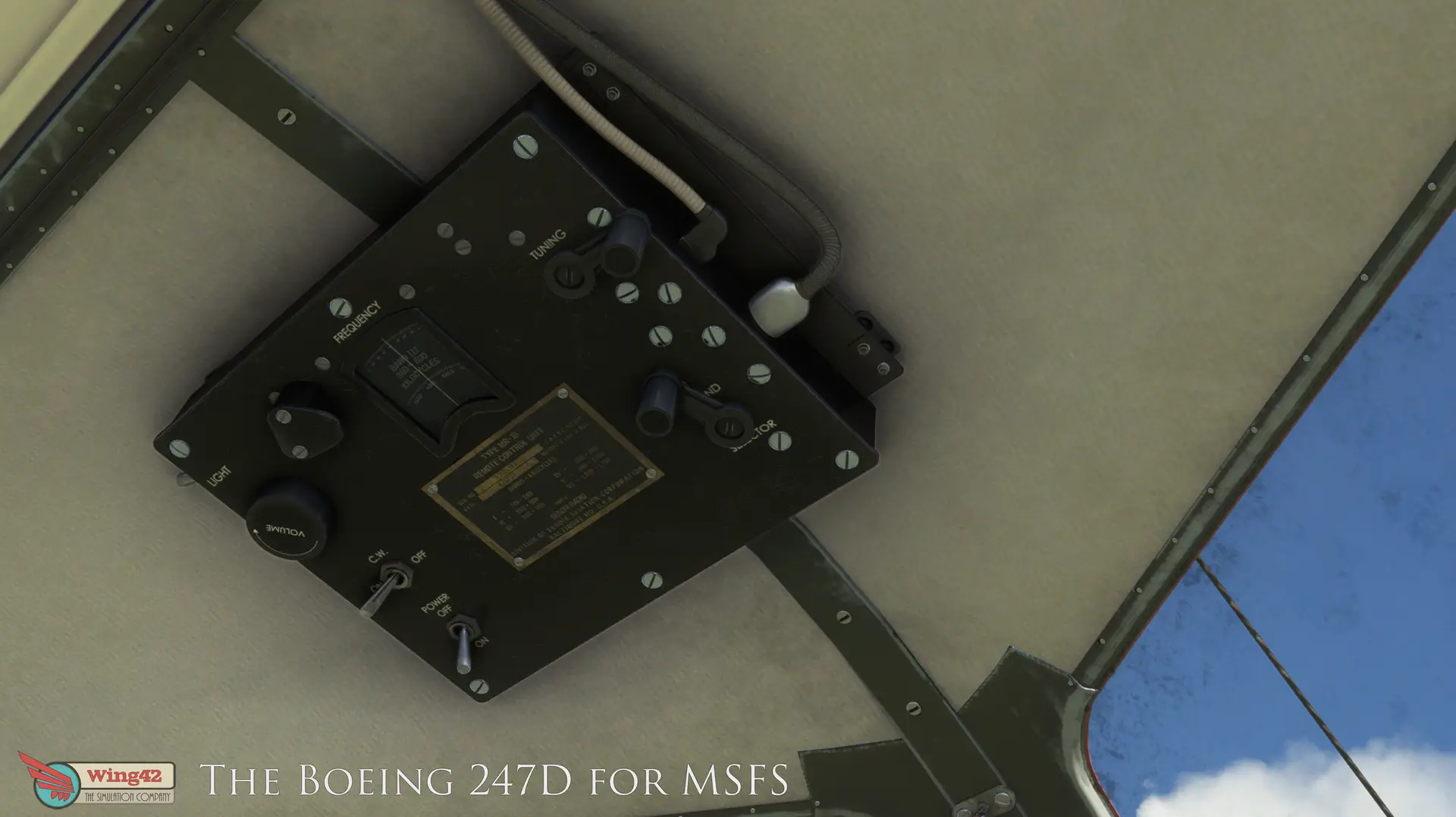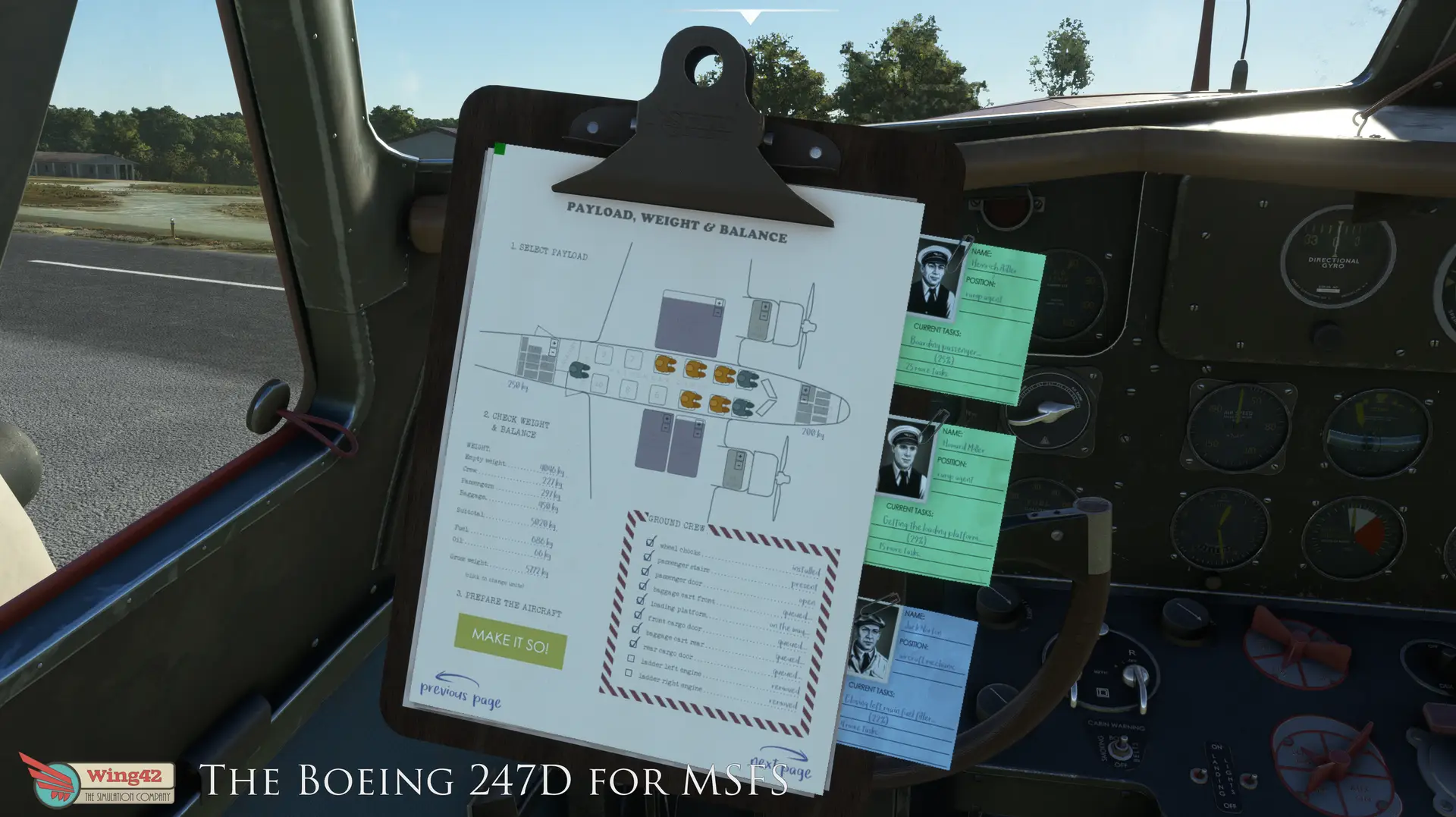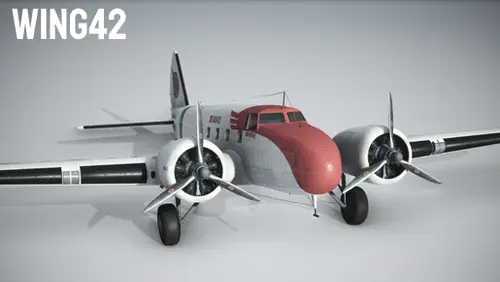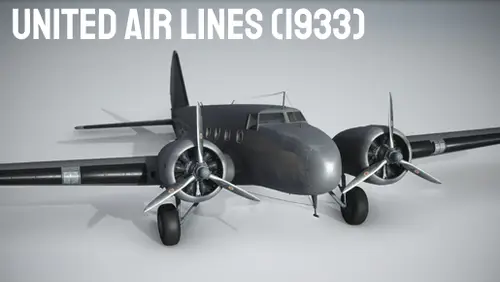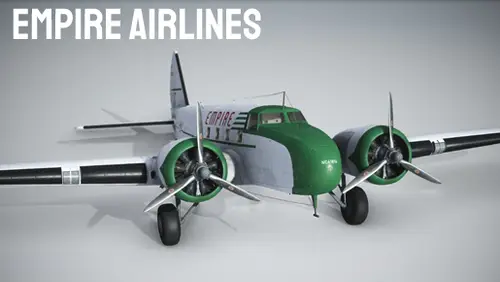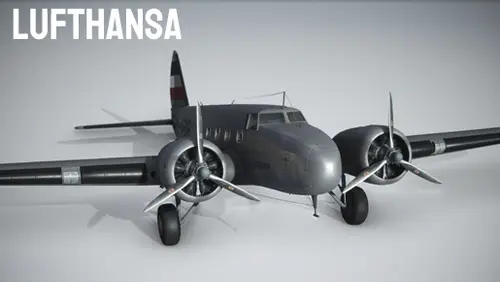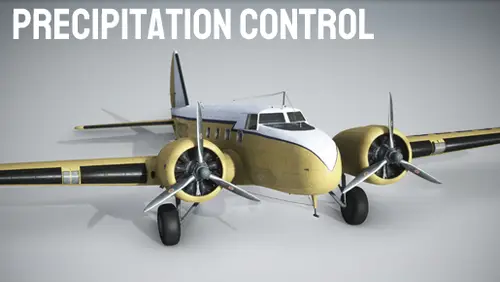- USD 19.99
- View more offers at FS Addon Compare
- Added: April 8, 2022
- Updated: January 16, 2026
Embark on your most realistic flight to date, with Wing42's (revolutionary) Boeing 247D. Developed in 1933, this aircraft set the standard for a new generation of airliners. Gone were the days of wood-and-canvas contraptions, now the future awaits with Boeing's first-of-a-kind modern airliner! Features such as a retractable landing gear, cantilevered wings, and a top speed of over 190 miles per hour, undoubtedly make the 247D a remarkable aircraft with historic significance.
The Wing42 Boeing 247D is the first aircraft in MSFS to fully implement a radio range navigation module that will have you "flying the beam." So attune your ears and decipher the code, it's by no means an easy feat, but it's all geared towards giving you an experience like no other. If you are looking for immersion that simulates a wide range of behaviours and effects, then prepare to have your hat blown off with our custom-coded Prop-o-Tronic Physics Engine. It uses real-world physics to simulate a rich and interactive flight with significant consequences - so don't be ill-prepared!
List of Features 1 Highly-detailed 3D model with high-def, PBR textures through and through 2 Super-realistic flight model, based on aerodynamic analysis and numerous sources from operating procedures to pilot reports, meticulously developed by Pamela Brooker. 3 Our Prop-o-Tronic physics engine is providing accurate system simulation for things like:
- Oil System
- Electrical System
- Realistic Heat-exchange
- Engine malfunctions
- much more! 4 Set your payload, fuel, and passengers and get your ground crew to work! 5 Comprehensive sound setup by Audio-mastermind Zak Spence, which makes you immerse into the aircraft. 6 Navigate like it's 1933! Use the radio to tune in to long-forgotten radio range stations to find your way in the sky, or tune in to one of 300 AM radio stations to listen to the music. 7 Included in the add-on are extensive documentations on the operation of the aircraft and the radio equipment.
